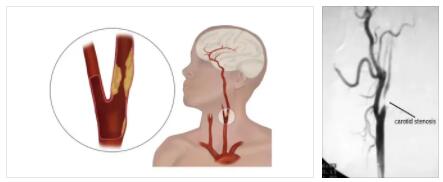Veneers can help anyone who has discolored or damaged teeth. These are mainly used in the front area of the teeth and have already given numerous people back a carefree, radiant smile. However, since a treatment with veneers is a purely aesthetic correction, neither the statutory nor the private health insurance companies cover the costs.
- Veneers are suitable for the incisors and the front molars.
- These veneers can be used to conceal smaller gaps and minor blemishes on the teeth.
- The shells are available in different designs, whereby it depends on the condition of the respective tooth which variant makes the most sense.
- The price for a veneer is usually between 300 and 1,500 euros per tooth.
What are veneers?
Dentists refer to wafer-thin and translucent veneers. With the help of a special adhesive, the dentist permanently attaches such a shell to the visible side of the defective tooth. Most veneers nowadays are made of glass ceramics or feldspar ceramics, as these have a similar hardness to natural tooth enamel. However, there are also veneers made of composite, a mixture of plastic and ceramic.
- Abbreviationfinder: Find definitions of English word – Astronomy. Commonly used abbreviations related to word are also included.
Due to their high-quality appearance, veneers are very popular in aesthetic dentistry. Usually the dentist or a dental laboratory makes the veneers individually. The costs for these custom-made products are correspondingly high.
The different types of veneers
Basically, there are several types of veneers. The dentist decides which ones are used depending on the condition of the teeth. The individual variants differ in terms of the type and thickness of the material used as well as in terms of their attachment and treatment costs. As a result, the price range for veneers is relatively large. Patients should expect costs of around 300 to 1,500 euros per tooth. Interested parties can get an overview of the different types of veneers and their usual costs in the following table:
| Veneer type | costs |
| Conventional veneers | Around 500 to 1,500 euros |
| Non-prep veneers | Around 600 to 1,000 euros |
| Veneers to go / instant veneers | Around 300 to 400 euros |
| Composite veneers | From 80 euros |
Conventional veneers
Conventional veneers are made of ceramic. A laboratory is responsible for the adaptation to the teeth and tooth color. To make space for the veneers and to secure the veneers, the dentist grinds the outer surface of the tooth minimally. The treatment is usually carried out under local anesthesia. On average, conventional veneers last about 10 to 15 years.
Non-prep veneers
Non-prep veneers are around 0.2 millimeters thick. Therefore it is not necessary to grind the teeth to fix non-prep veneers. The type of treatment is comparatively gentle. However, non-prep veneers are more suitable for short-term purposes than for permanent use. The shells can be removed with almost no residue, but have a much shorter shelf life than conventional veneers.
Veneers to go / instant veneers
The so-called veneers to go are available to dentists as prefabricated shells so that they can be attached in just one session. The production does not take place beforehand in a dental laboratory. Instant veneers usually consist of ceramic or a mix of plastic and ceramic and are adapted to the shape of the corresponding tooth during the treatment. The costs for this process are comparatively low.
Composite veneers
A composite veneer is usually made of plastic. The dentist also applies these veneers directly to the tooth surface in one session. With this procedure, too, there is no need to grind off the enamel; instead, the material is applied in layers. After hardening, layer by layer, the last layer of the veneer is finally polished.
Who are veneers suitable for?
In many cases, the veneers are suitable for improving the appearance of teeth with a visible blemish. They are used particularly frequently for:
- discolored teeth
- damage to the tooth caused by tooth decay
- minor misalignment of teeth
- minimal tooth gaps
- Defects in the tooth enamel
- a fracture of the front teeth
This means that in many cases veneers are also an alternative to bleaching . If you grind your teeth, bite your nails or do sports with an increased risk of injury to the oral cavity, you should not use such bowls. Even if there are already large fillings, veneers are not the ideal solution.
The course of a veneer treatment
The first step is a detailed consultation and examination by the dentist. He then cleans the teeth thoroughly. In addition, he treats carious areas and replaces (if necessary) existing fillings. The doctor then documents the initial situation in pictures.
Depending on the type of veneer, the dentist gently grinds the tooth to be restored in a second step. With conventional treatment, he takes an impression of the tooth, which he can then use to create a plaster cast fit. This is used by the dental laboratory as a template for the veneer. After production, the dentist checks the accuracy of the fit of the veneer before finally gluing it onto the tooth.
Disadvantages of veneers
Even if the special bowls can ensure an appealing aesthetic, they still have some disadvantages. In the course of the treatment, the dentist often has to remove healthy tooth substance. This changes the natural appearance of the tooth. In addition, grinding may cause pain. Further disadvantages are the sometimes relatively short shelf life and the generally high costs that the patient has to bear himself.
Maintain veneers
Special care of the veneers is not necessary. However, you should make sure that you brush your teeth with a veneer as thoroughly as the rest of the dentition. With the help of good oral hygiene, you can also help ensure that at least high-quality bowls last longer. It is also advisable to have your teeth checked for caries every six months.




